The Brush Dances, the Light Sings, and the Bumblebees Play
By John Palka — Posted November 13, 2022
In this post, I would like both to offer some important personal news and to introduce an enriched perspective on living beings.
IT’S HAPPENING!
Close to a year ago, on December 27 of 2021, I asked the followers of Nature’s Depths to be patient with me while I worked on two books honoring my beloved wife, Yvonne, and the life we lived together for sixty years: a memoir called The Journey Together of Johnny and Yvonne as Seen through Johnny’s Eyes and a coffee table book combining Yvonne’s paintings and my photographs, all devoted to nature, called The Brush Dances and the Light Sings.
You have indeed been patient, and for that I am very, very grateful. This past year, I have prepared only a single post, a Rumination called The Egret, the Photographer, and the Universe. Today, I want to share with you the outcome of this pause—The Brush Dances and the Light Sings is complete, beautifully printed, and available to anyone who might want to have or to give a copy!
Here is the book’s cover painting. It was one of Yvonne’s favorites and I have posted it previously on Nature’s Depths. She called it Autumn Glow.
This is the way the book opens.
The book you are holding presents a selection of paintings by my beloved wife, Yvonne Palka, interwoven with my photographs. It is an expression of our love of beauty and art, of our devotion to nature, of our spiritual search, and of our shared journey of sixty years. . .
I have sought in these pages to bring together those of Yvonne’s paintings that most express her warm, joyous, loving, and uplifting spirit. I complement these images with photographs that resonate with the paintings in one way or another—sometimes in form, sometimes in color, and always in spirit. Yvonne is no longer here to lend her physical voice, but the spirit that first imagined such a project has continued to be with it ever since.
What does it mean for a photograph and a painting to resonate? Here is an example, the opening pair in the book.

The book provides a brief text about how Yvonne and I viewed and experienced our work. Its body, however, is fifty of Yvonne’s paintings and fifty of my photographs, fully as resonant with each other as are these two.
I am very gratified that all the people who have seen The Brush Dances and the Light Sings have loved it and been amazed at the quality of the overall design and the printing. Should any of you readers of Nature’s Depths be interested, here is the buying information:
a) Directly from the publisher, Kirk House Publishers (my preference).
b) From Amazon.
DO BUMBLEBEES PLAY?
Now let us turn to something quite new—the inner lives of some very important members of the community of organisms on the Earth, bumblebees.
We have encountered bumblebees before, notably as major pollinators. We have seen how they collect the nectar that flowers produce and that the bumblebees use for food (The Intimate Life of a Hollyhock Flower and A Banquet for Butterflies and Bumblebees), and we have also learned about the role of the electrical field of the whole planet in the way that bumblebees pick up pollen from one flower and transfer it to another (Connected with Planet Earth).
Today we will look at bumblebees from a different perspective, contemplating a recently-published study that examines not the role that they play in life on Earth but rather their inner life—specifically, the concept that bumblebees like to play!
This study has attracted considerable attention, including a report on National Public Radio. The title of the NPR report is “If bumblebees can play, does it mean they have feelings? This study suggests yes.” Do bumblebees really play in at least somewhat the same sense as children play? When bees play, do they have feelings—do they really have fun while they play? And how would we ever know?
In fact, why would anyone even ask that question? Dogs, yes, but bumblebees? A bee’s brain is smaller than a pinhead. Bee activity seems to be devoted to the difficult and time-consuming work of searching for and collecting food for themselves and for their brood, as you can see again in these pictures.
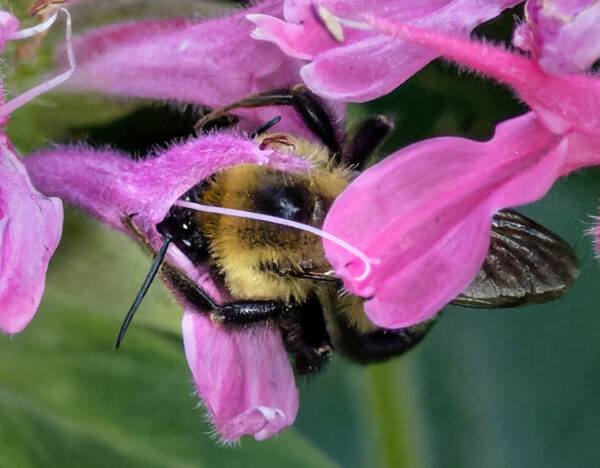
It turns out that wondering about play is not new in the Western academic world. As early as 1896, the German philosopher and psychologist Karl Groos published a book titled Die Spiele der Tiere; it came out in English in 1898 as The Play of Animals. Groos argued for the interpretation that play in animals definitely exists because it is evolutionarily useful—it is a safe way of practicing behaviors that support survival. Contemporary thought tends to go beyond this utilitarian perspective, but Groos’s work illustrates the kind of attention that play received from scholars even a century ago.
Most studies on play have focused on mammals and birds, and information on play in insects is sparse. On the other hand, studies on insect intellectual capabilities—for example a numerical sense—have been proliferating in recent years. One such study was done in the laboratory of Prof. Lars Chittka, a German biologist working in England. Here is a description of what Chittka’s team noticed that led to the new study on play.
In a previous study it was found that bees can be trained to roll balls to gain access to a reward. During the execution of this experiment, the team observed that bumblebees would often roll balls for no apparent benefit. Between experiments, balls were placed in the tunnel that connected the hive to the arena that contained the food. Despite there being enough space to avoid the balls, bumblebees often seemingly unnecessarily walked over and rolled balls on their way to and from food. This observation provided the motivation for the present study . . .
In other words, bumblebees that could easily have walked to where sugar water awaited them would instead make a detour and spend time rolling balls! Keen observation and ongoing curiosity led to new investigation. That’s the way so much science works!
The new study in the Chittka lab basically repeated the prior observations in a more systematic and quantitative way. It found, for example, that younger bumblebees spend more time rolling balls than do older ones, and young males more time than young females. The basic observation suggesting that ball-rolling constitutes play is best understood through the short video that is included in the NPR report. Please click on the video, watch, and enjoy (all the way through)!
And what did the playing bumblebees feel like? Did they feel at all? These are questions to which we do not have clear answers but to which major attention is being given. Prof. Chittka recently published a book titled The Mind of a Bee. His closing paragraph is a good example of the ideas that are circulating and giving rise to ever-more creative studies.
The challenges of survival and self-replication [reproduction] that a moving organism faces are most efficiently met when brain and body are intimately connected, enabling the organism to know itself as distinct from non-self and to predict at least the immediate future, in part from knowing its own intentions. In this view, an elementary form of consciousness may have come into being at the roots, not at the endpoint, of animal life.
Prof. Chittka’s book has an afterword in which he explores the implications that possible bee consciousness has for the way we humans treat bees. Here is the potent closing of the afterword.
The assessment of pain and emotional states in animals is a moral obligation in deciding on strategies for animal welfare, for domestic animals and those hunted in the wild, as well as for animals used in laboratory experiments. However, current legislation in most countries places no limits on the treatment of invertebrates [animals apart from fish, amphibians, reptiles, birds, and mammals], on the assumption that they do not experience pain or emotions. This means that lobsters can be cooked alive in restaurants, and that tethered insects can be subject to invasive neurobiological procedures in the laboratory without anesthesia or analgesia. Indeed, there is no requirement to apply for a permit to ensure that the research is conducted with due consideration of the numbers of animals used, the severity of the experimental treatment, or the possible benefits to science or humanity . . .
And if you are still not swayed that bees have such experiences—and that this is an important argument for their conservation—then remember that we still need them to pollinate our crops, that the candles made from their wax have illuminated scholarly efforts through the ages, and that the harvesting of their honey might well have provided the necessary carbohydrates for our ancestors’ costly brain enlargement, and might thus have fueled the evolution of the human mind. We owe the bees. Act accordingly.
Work like this does not provide definitive answers to the biggest questions, many of them thousands of years old, about experience and consciousness in animals other than humans. It does, however, provide refined lenses through which these questions can be examined in ever-greater depth. It prompts us to ponder what might be behind our observations of a whole range of phenomena and which of our long-held assumptions ought to be re-examined. I invite you to do just that as you savor the world of nature—our world. Ask yourself, what’s behind the surface and which of my often unconscious assumptions should be re-examined?

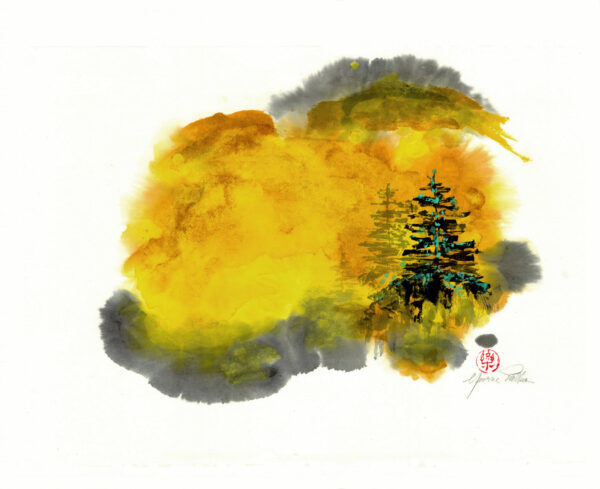
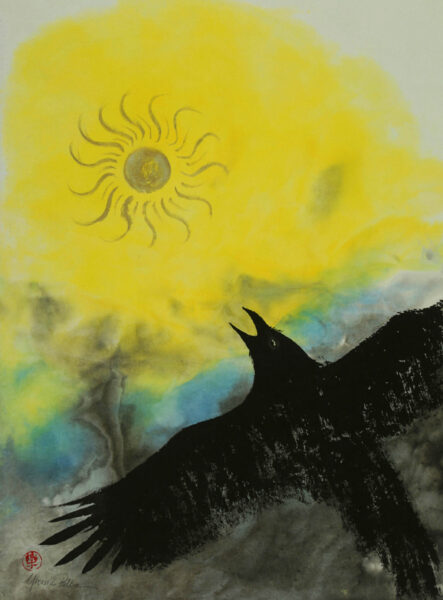
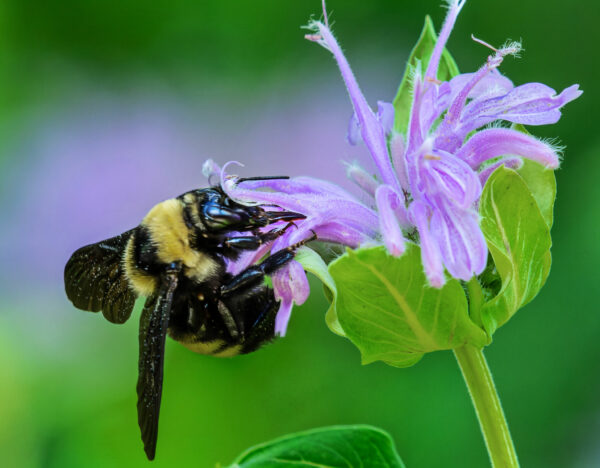
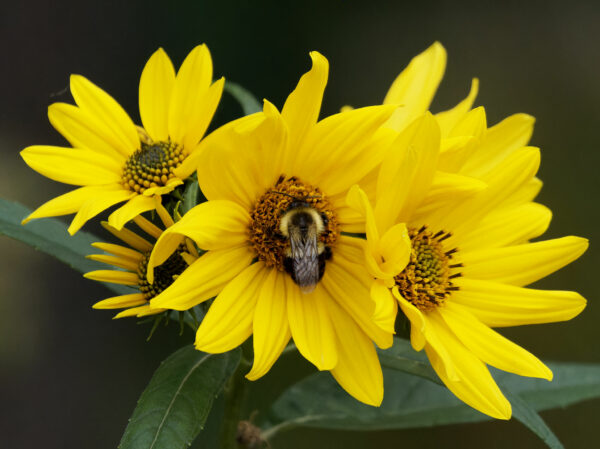
Thanks, Johnny, for a peek into your achievement and your honoring of Yvonne’s life’s work. I read all your posts when they come out.
Kit Ketcham
Thank you, Kit.
Dear Johnny, It is wonderful to see your column again! And congratulations on your fine new book. You are such a wise human being. Your voice is very important. Thank you, Ann Linnea
You are making me blush, Ann!
Thank you Johnny again for wonderful thought provoking observations and more. So beautiful in different ways, different levels. The pairing of photo and painting is exquisite!
Yes, the bumblebees..their play .. this is almost exactly out of Hindu philosophy, say Sankhya which I am trying to understand. I have bring up in our class.
You are always thought provoking, but today you added another dimension, beauty.
Thank you, Godan. Especially since Yvonne’s passing, I have become increasingly aware how important beauty is to me – not just because I enjoy beautiful things, but because there is so much beauty in the world that I used let slip by me or take for granted. Now I experience it as a gift for which I am grateful.
Wonderful Johnny..!! Your superb words on adds to the joy I experienced reading “The Hidden Life of Trees” by Peter Wohlleben since we last connected. Thanks much again for all you bring to my sense and pleasure with nature!!!
Congrats on your book— a gift to us all!!!
-Marty
Thank you, Marty. There is so much for us to appreciate, isn’t there!
Johnny, as always, your posts make me so happy to be alive so I can enjoy the world as you expand it.
Thank you.
Thank you, Trish. Those are wonderful words!!
Thanks, Johnny, for the deeper context for the NPR story – if they had as much fun with the beads as I had watching them, then they had a very good day. So many things we can learn from bumblebees, the least we can do is let them play in peace. Love the preview of your collaborative book, and look forward to exploring the whole book when it comes.
Thank you, Marten. That video was really evocative, wasn’t it!
This is lovely, Johnny. I can’t wait to see the book. I love bumblebees. Often they sleep in flowers which is such a treat to see!
If you spot bumblebees while they are sleeping, Elise, you’re really looking. That’s a model for all of us!
Heartfelt congratulations on your bringing your and Yvonne’s book to the world!
Thank you for your essay about the bumblebees. So many interesting points. One of which was “Keen observation and ongoing curiosity led to new investigation. That’s the way so much science works!”
Watching the video I had a thought: The term “ball rolling” is used. Which tends to put the emphasis on the bee rolling the ball. But also perhaps the ball is moving the bee. The bee sets off a movement, the ball rolls, the bee rides; repeat with changes in angle and speed etc. If this is actually happening (hard to know from one video) might this be something a bee would enjoy?
I’m also thinking about children’s play with and on objects that move them in interesting ways (swings, slides, spinning merry-go-rounds.)
You’re so right, Karen! As you suggest, a bumblebee might find it equally enjoyable whether s/he is rolling the ball or being rolled by it! A fun alternative I had never thought of.
Fascinating, Johnny. I trust you have seen Ed Yong’s book on animal sensory capabilities, «An Immense World». Written by a journalist, not a professional scientist, but by my favorite journalist. Barbara and I were both entranced and educated by it.
I have not actually read Ed Yong’s book, Steve, but I have read a number of articles in which he has written about it. I also know most of the cases he describes. They are not new – they were part of the curriculum that drew me into neuroscience in the late 1950s! Yvonne and I very nearly went to Harvard to work with Don Griffin on echolocation in bats, Yvonne’s first project at UCLA was on electric fish, and our advisor (Ted Bullock) had once worked on infrared detection in rattlesnakes. But Yong is a superb writer and I think he is doing us all a great service by collecting the cases and painting the broad picture so well.
I am so grateful to know of this work going on, providing insights and knowledge key to dismantling false and destructive premises, and to creating a humble and life-sustaining basis for our relationship with and within all of glorious creation.
Fortunately, more and more of this kind of work is going on and the degree to which we share our lives with the rest of our world is becoming ever-clearer.